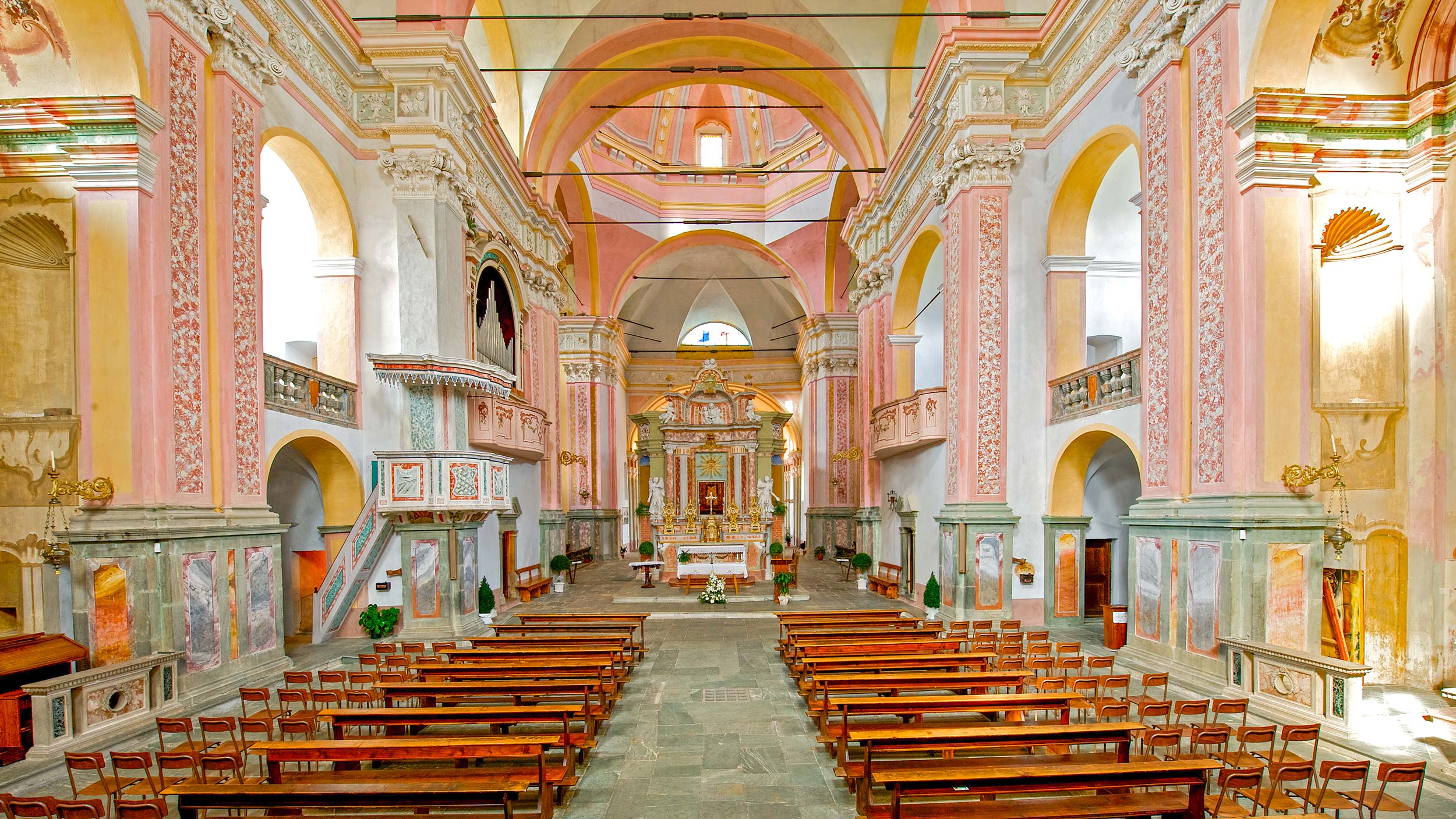Via Santa Casa, 48, 23020 Tresivio SO
The Sanctuary of the Santa Casa di Tresivio stands majestically on a verdant rise just outside the town center. The position has long been developed: a church dedicated to the Virgin was built on the hill around the end of the first millennium, dialoguing with a castle (now lost) perched on the summit and overlooking the valley.
The site must have appeared ideal in the mid-17th century when the idea emerged of building a temple to provide a base in Valtellina for the worship of the Madonna of Loreto. The Lauretan cult originated in the Marche region and then spread through Italy and into much of Europe and other parts of the world, powered by the belief that the small house, a precious relic ensconced in the magnificent sanctuary of Loreto, is none other than the Holy House (Santa Casa) of Mary, flown by angels from Nazareth to Dalmatia and from there to Loreto in 1294.
Kings and Popes took an interest in Loreto, boosting its fame by giving precious gifts and indulgences. Pope Julius III sent the first Jesuit confessors there in 1554, entrusting them with the spiritual care of the pilgrims who flocked by the thousands to the hill in Marche, which had become one of Europe’s most frequented pilgrimage sites.
The plan undertaken in Tresivio in 1646 was very ambitious: replicate the model of the illustrious prototype by erecting a church big enough to contain an exact reproduction of the Holy House of Loreto, which in turn would contain an exact wooden replica of the effigy venerated in the mother sanctuary.
According to the founding document, the initiative is to be attributed to the community of Tresivio and a local Marian confraternity, but there are many reasons to suppose that the Jesuits in the neighboring town of Ponte played a significant role as part of their efforts to stem the tide of Protestantism.
The imposing structure we see today is the result of an extension built at the back in the 18th century, involving significant subfoundation work which immediately caused damage to the existing walls. The part of greatest architectural value is the 17th-century volume facing out over the valley. Severe and compact, it is banded with two orders of pilaster strips, niches, and windows generously distributed on all sides. The interior is thus bathed in natural light entering via the internal galleries (matronea), accentuating the rosy tones of the faux marble plaster.
The three entrances are framed by 18th-century portals crafted in locally quarried Tresivio pietra verde, much in demand by artisans and stoneworkers for its workability and pleasing green hue.







